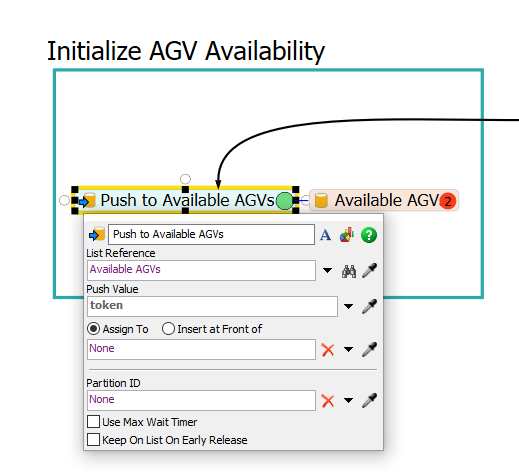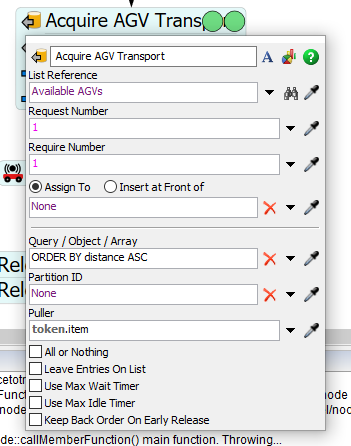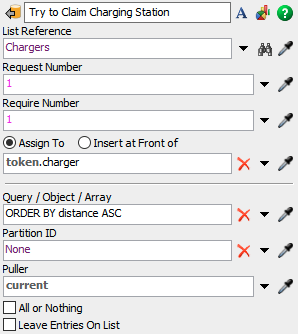Hello,
Full disclosure, I'm a FlexSim newbie. I'm still in the process of trying out the software to assess it's suitability for our applications, so there is likely a very simple explanation here.
I'm building an AGV model from scratch (as opposed to using the AGV templates) in order to avoid a lot of the control point looping and AGV-seeking-work features inherent in how they're built. I've been using a process flow to generate loads, assign destinations, acquire the AGV, and then dispatch it. The object flow dictates general AGV activity, particularly when it is not executing a job (hunt for a battery charger, if not available park at a buffer point).
A token representing the AGV is pushed to a global list of available AGVs. The list includes a distance metric to the puller. My intent is for this to assess the travel distance between physical objects, but I kept receiving errors when this metric is calculated. Is the right way ensure this variable is calculated to push to and pull with the physical item (token.item)? What if token.item is never generated in the process flow, since the objects (task executors) are placed on the 3D model prior to starting (as opposed to pallets, which are generated programmatically with the token.item label)? Is there still a means to access the physical item?
I receive similar errors when pulling from my lists of charging stations and buffer locations.
Pushing the AGV token to list:
Pulling operation:




